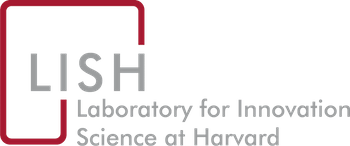Science of Science
. 2014. Houston, We Have a Problem: NASA and Open Innovation (A). Harvard Business School Case. Harvard Business School. Publisher's VersionAbstract
. 2014. Nivea (B). Harvard Business School Case Supplement. Harvard Business School. Publisher's VersionAbstract
. 4/2019. “Incentives for Public Goods Inside Organizations: Field Experimental Evidence.” Journal of Economic Behavior & Organization, 160, Pp. 214-229. Publisher's VersionAbstract
. 2017. “A Field Experiment on Search Costs and the Formation of Scientific Collaborations.” The Review of Economics and Statistics, 99, 4, Pp. 565-576. Publisher's VersionAbstract
. 2010. Myelin Repair Foundation: Accelerating Drug Discovery Through Collaboration. Harvard Business School Case. Harvard Business School. Publisher's VersionAbstract
. 2013. Open Innovation at Siemens. Harvard Business School Case. Harvard Business School. Publisher's VersionAbstract
. 2016. “Innovation Experiments: Researching Technical Advance, Knowledge Production, and the Design of Supporting Institutions.” In Innovation Policy and the Economy, 16: Pp. 135-167. Chicago, IL. Publisher's VersionAbstract
. 2011. InnoCentive.com (A) (TN). Harvard Business School Teaching Notes. Harvard Business School. Publisher's VersionAbstract
. 2018. “Charitable Giving in the Laboratory: Advantages of the Piecewise Linear Public Good Game.” In The Economics of Philanthropy: Donations and Fundraising, . MIT Press. Publisher's Version
. 2013. “Experiments in Open Innovation at Harvard Medical School.” MIT Sloan Management Review 54 (3). Publisher's VersionAbstract
. 2014. Nivea (A). Harvard Business School Case. Harvard Business School. Publisher's VersionAbstract
. 2017. “Perceived Organizational Support For Learning and Contribution to Improvement by Frontline Staff.” Academy of Management Proceedings, 2017, 1. Publisher's VersionAbstract
. 2014. Houston, We Have a Problem: NASA and Open Innovation (B). Harvard Business School Case. Harvard Business School. Publisher's VersionAbstract
. 2015. Nivea (A) and (B). Harvard Business School Teaching Notes. Harvard Business School. Publisher's VersionAbstract
. 2011. Innovation and the Challenge of Novelty: The Novelty-Confirmation-Transformation Cycle in Software and Science. Harvard Business School Publishing. Publisher's VersionAbstract
